The smartphone market is quite complex but interesting and users preference seems to change rapidly. A few years ago, 64GB of internal storage was just enough for any smartphone. However, as of today, 64GB is not even enough for the lowest model in a flagship series. Similarly, a 5MP shooter was the norm some years ago. We can not say the same about the flagship smartphones of 2021. Yesterday, considering users’ preferences after a survey, AnTuTu announced the user preference list for the third quarter of 2021. According to AnTuTu, it conducted multiple-dimensional statistics. The statistics consider the display, processor, internal storage, RAM, etc. Here are the preferences of users with respect to the different aspects of the smartphone.
Screen Size: Large screens takes the day
A few years ago, 5-inch displays were the standard for many smartphone manufacturers. Over the past few years, the smartphone industry has evolved so fast that even 6-inch is not enough for most smartphone users. From the survey pie chart, we can see that most users prefer the 6.6-inch display and this accounts for 32.4%. The closest to this size is the 6.7-inch display which accounts for 20%. This means that the two screen sizes (6.6 inches and 6.7 inches) collectively account for more than half of users’ preferences.
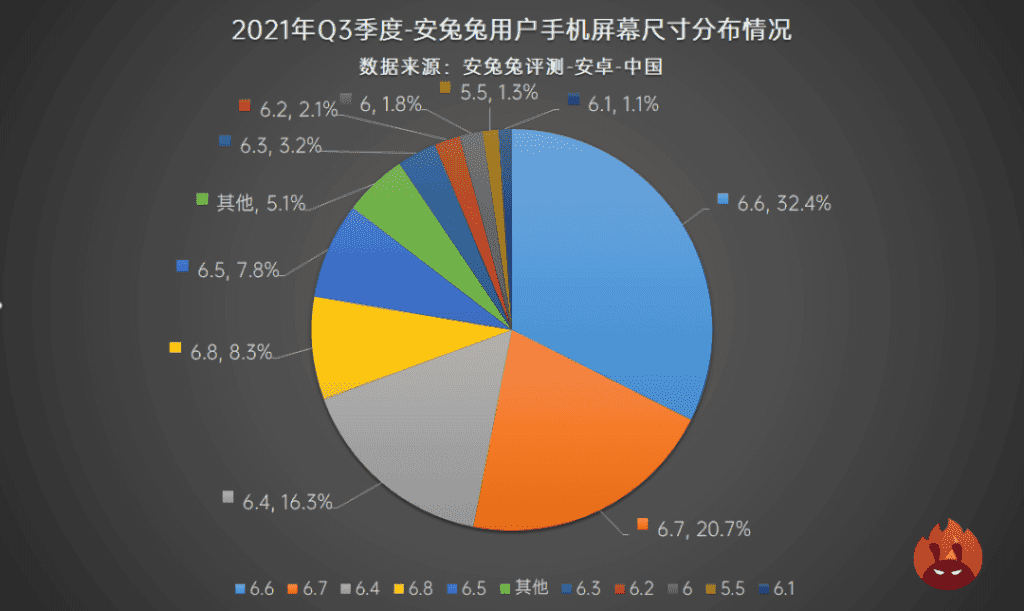
These screen sizes are actually the common size used by mainstream models in the market today. This survey also conspicuously shows users’ detest for small-screen smartphones. Smartphone screen sizes between 5.5 inches and 6 inches account for only 3.1%. Small screen smartphones have a very small market presently and this is why companies like Apple are cutting off the smaller display model from its series.
Screen Resolution: High-resolution screens are difficult to popularize
Another aspect of a smartphone that users usually watch out for is the resolution of the screen. High-resolution screens are not entirely strange in the smartphone market. However, these displays are not so popular. According to the recent survey, the 1080P display continues to occupy the mainstream, with a total of 60.6%. Although many flagships have used high-resolution screens this year, this is a flagship feature for now. Many mid-to-high-end models do not have this feature for two reasons. One is the high cost of high-resolution screens, and the other is that 1080P is still sufficient today. If the new mid-range smartphones decide to use high-resolution displays, these devices will get more expensive and also consume more power.
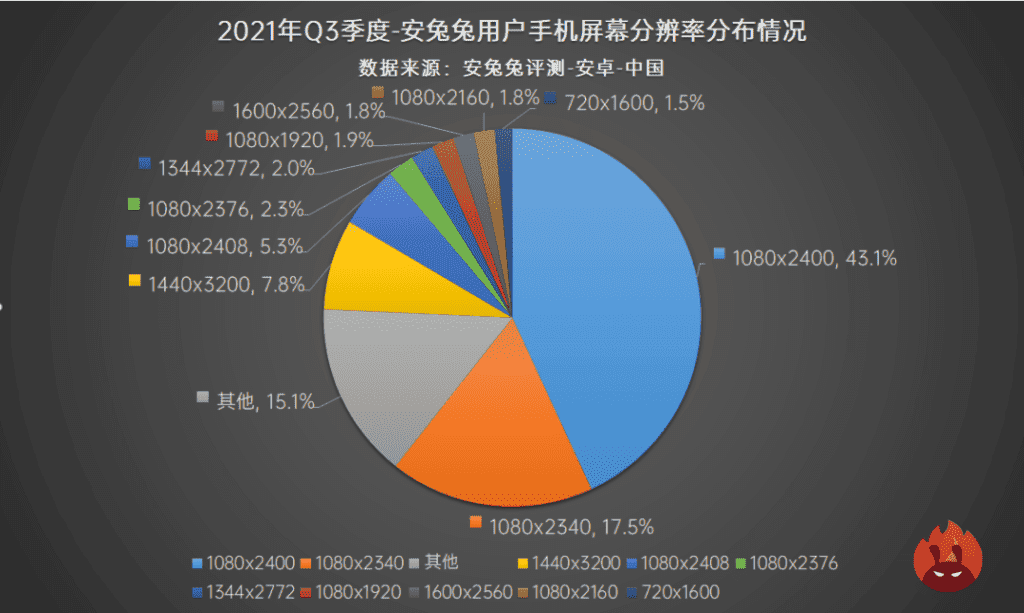
Screen Refresh Rate: High refresh is a necessary configuration
Just like high-resolution, a high refresh rate also consumes more power. However, the high refresh rate is more of a necessity than the high resolution. From the distribution chart, the 60Hz refresh rate still has the largest share, with a share of 41.6%. Well, this by no means implies that the high refresh rate is not popular because the 120Hz refresh rate also accounts for 41.3%. The 90Hz refresh rate appears to be hanging in between these two extremes. In addition, the 144Hz refresh rate has a place in this chart and it will be coming mostly from gamers.
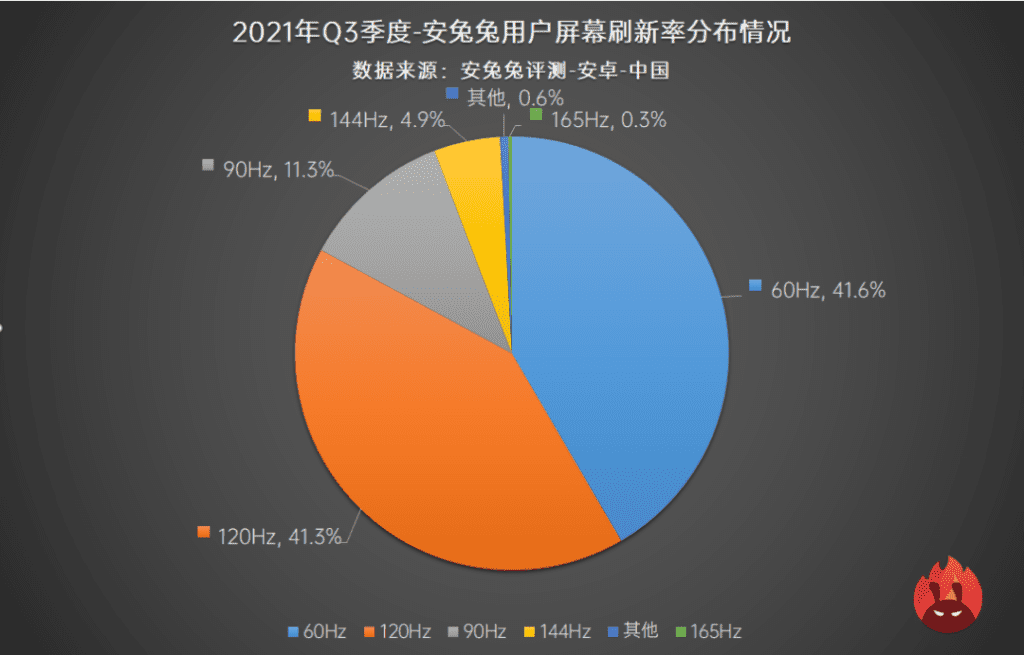
Processor Brand: MediaTek is the world’s first but not users choice
MediaTek’s share has surpassed Qualcomm and is already the world’s largest supplier of smartphone chips. However, MediaTek’s advantage comes mainly from the mid-range segment. In the flagship end, Qualcomm is clearly ahead. However, the user preference chart by AnTuTu shows that Qualcomm ranks first with a share of 61.8%. It is followed by MediaTek with only 19.1%. Why does Qualcomm’s share of Antutu users far exceed that of MediaTek? The main reason should be that many MediaTek mobile phone users do not check their performance capacity on AnTuTu. Of course, the reason for this is obvious.
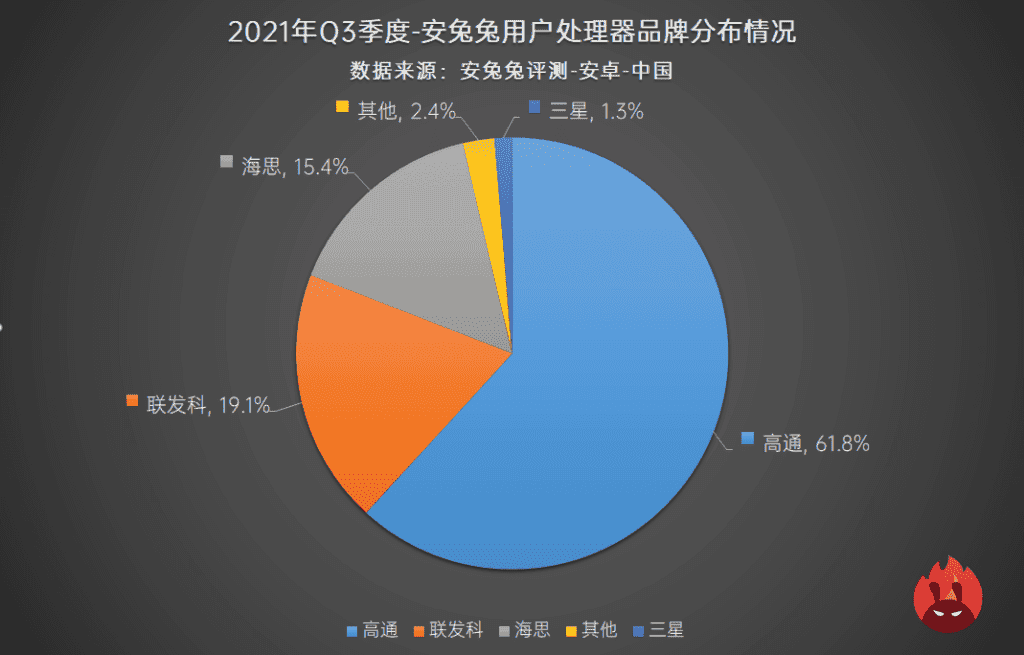
Number of CPU cores: eight cores are fully covered
The data shows that the proportion of eight-core processors is 99.1%, which includes Qualcomm, MediaTek, HiSilicon, and other brands. However, ten-core and quad-core chips are spares for some users. They are not completely absent from the user’s preference list.
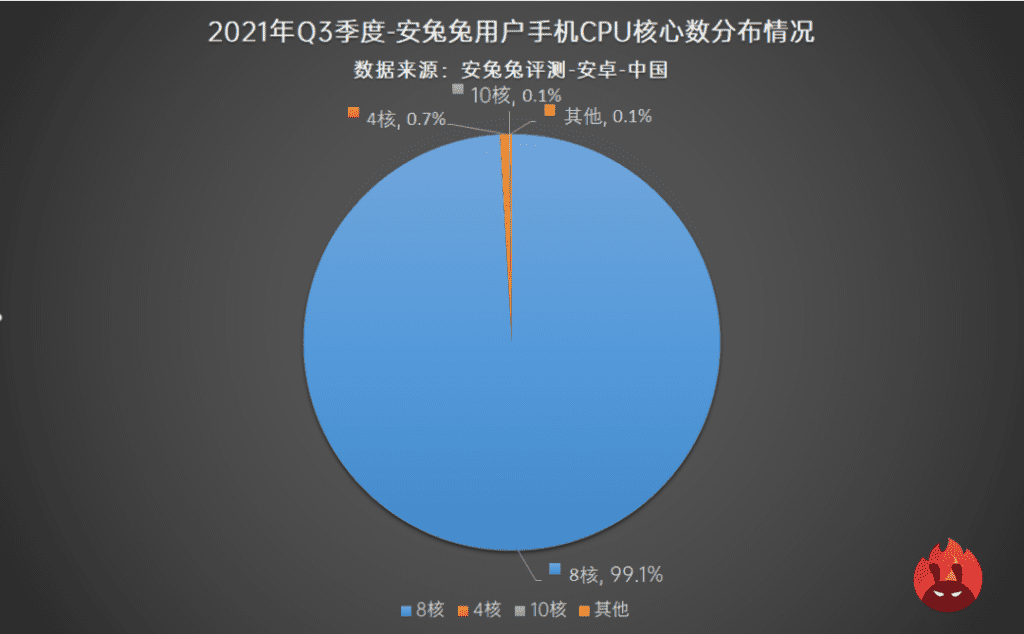
RAM: 6GB is becoming obsolete
The RAM capacity is a big deal in today’s market because it determines how well your smartphone runs. Of course, with proper software optimizations, lower RAM capacity could just be enough. However, AnTuTu’s chart shows that anything below 8GB seems to be falling out of users’ choice. 8GB and 12GB collectively account for 76.4%. While 8GB accounts for 49.8% which is by far the most preferred, 12GB accounts for 26.6%. The former standard, 6GB, is becoming but not completely obsolete. Of course, mid-range and entry-level smartphones still find 6GB of RAM interesting. 6GB and 4GB of RAM collectively account for 21.9%. While 6GB of RAM claims 16.6%, 4GB of RAM has to make do with only 5.3%. Users are now paying more attention to the advantages of RAM because more applications now run in the background.
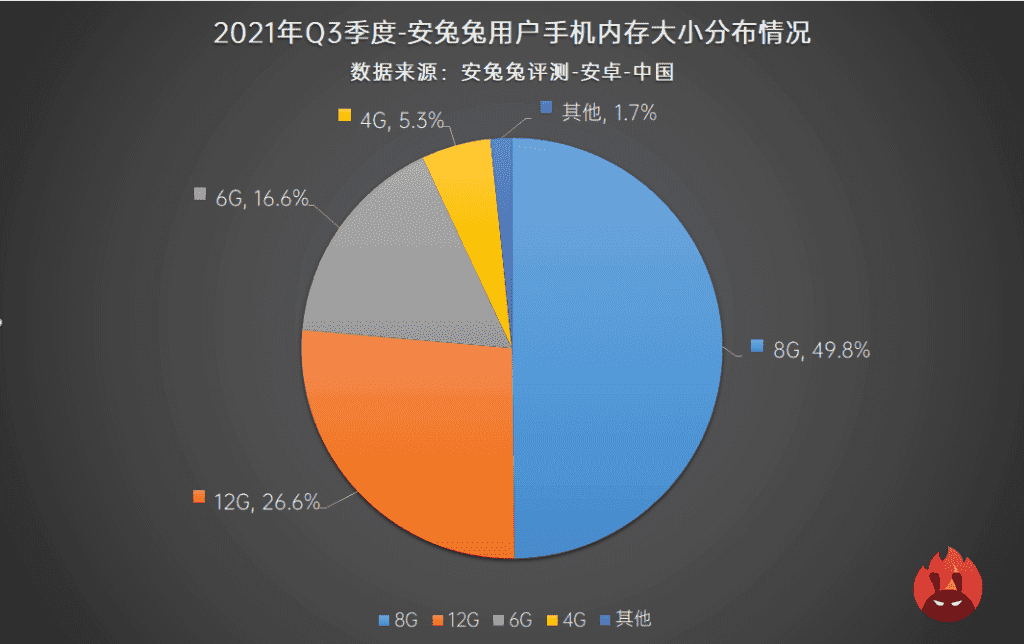
Internal Storage: 128GB is now the starting point
From the AnTuTu survey, the lowest acceptable internal storage for users is now 128GB. According to the report, 512GB and above is not so popular either as 128GB and 256GB internal storage collectively account for 89.9%. While 128GB accounts for 44.6%, 256GB internal storage is most preferred with 45.3%. While 32GB and 64GB collectively account for less than 8%, 512GB is preferred by only 2.6% of the survey participants.
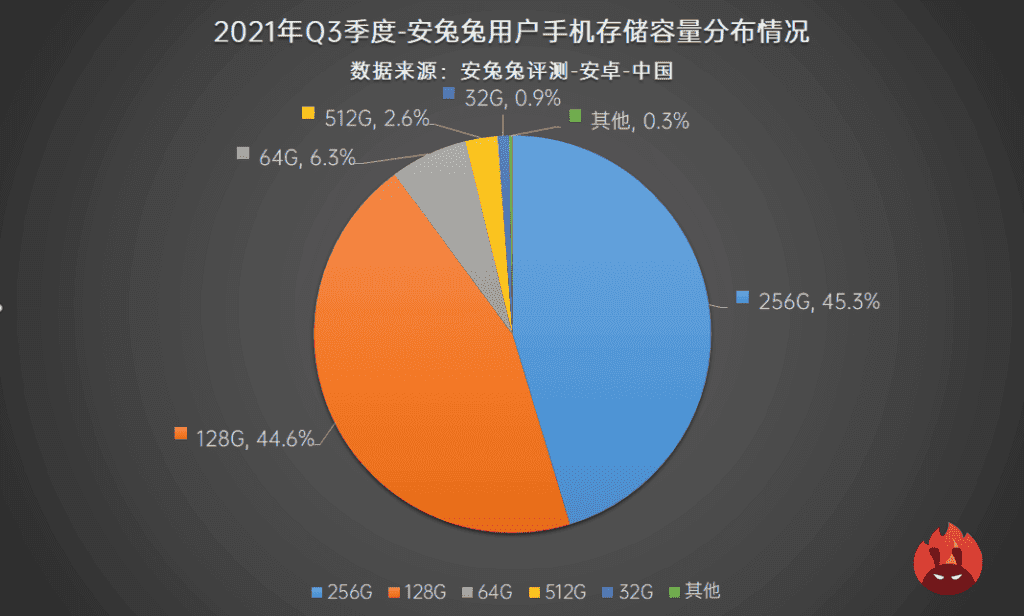
Android version
Whenever the major version of Android is updated, the first-tier manufacturers will soon launch a public beta version based on the new system. Especially in the past two years, there have been more manufacturers joining the early adopter’s list. However, the distribution chart shows that Android 11’s share is 67.9%, which is not much growth compared to the previous quarter, and nearly 30% is still occupied by lower systems.
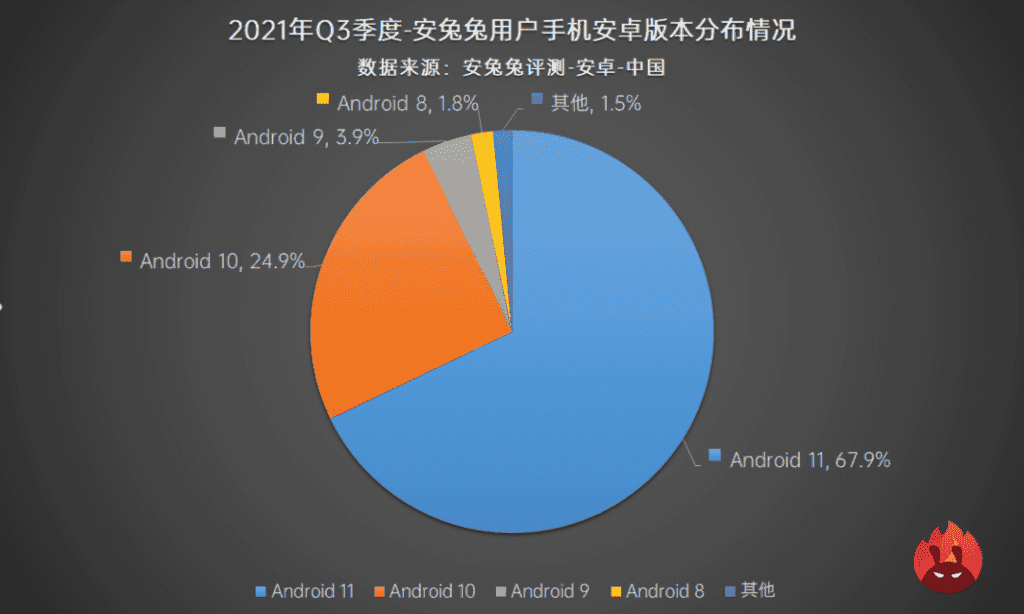
It is important to note that Android 12 is already official but its adoption rate appears to be slow. Although it has been improved, Android still has a long way to go to solve the fragmentation issues.
Conclusion
It appears that more Android users participated in this smartphone user preference than iOS users. Unfortunately, AnTuTu did not specify the number of participants or which platform they belong to. We can be sure that a survey of only iOS users will give a different result especially in terms of RAM. However, the screen parameters and storage will likely have similar results whether on the iOS or Android platforms.
Follow Gizchina.com on Google News for news and updates in the technology sector.





